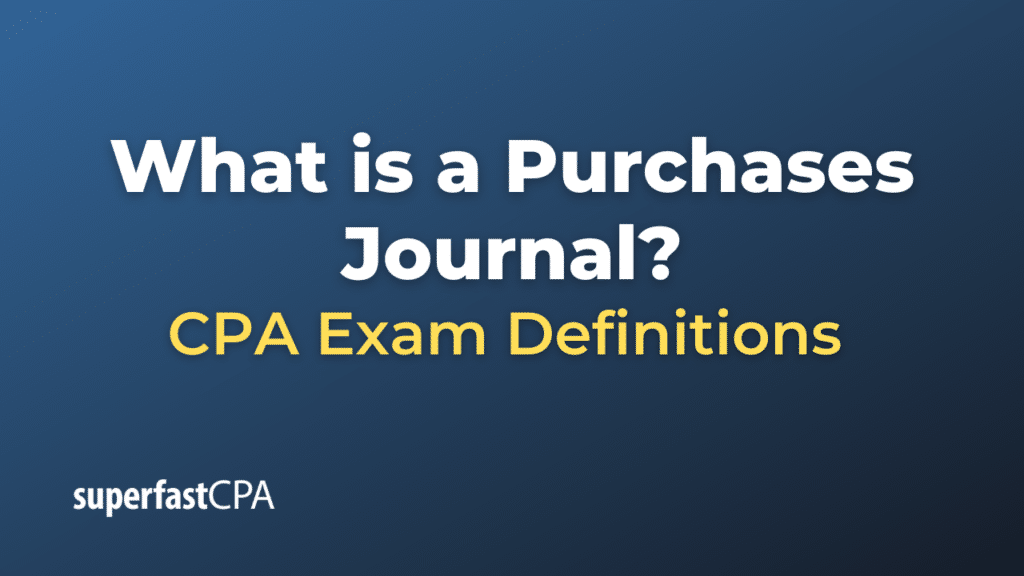Purchases Journal
A Purchases Journal, also known as a Purchases Day Book, is a specialized accounting journal that records all of a business’s credit purchases during a specific period. It is used in manual accounting systems to simplify the bookkeeping process and is part of the larger double-entry accounting method.
The Purchases Journal is used only for recording transactions related to the purchase of goods on credit for the business. It does not include cash purchases or the purchase of assets or services.
Each entry in the Purchases Journal typically includes the date of the transaction, the name of the supplier, the invoice number, a brief description of the items purchased, and the amount of the transaction.
At the end of a specific period (daily, weekly, or monthly), the total purchases recorded in the Purchases Journal are summed up and posted as a single entry to the general ledger, reducing the number of individual entries that would otherwise be required.
By recording all credit purchases in one place, a Purchases Journal allows a business to easily monitor its purchasing activity, manage its accounts payable more effectively, and simplify the auditing process.
Example of a Purchases Journal
Let’s say we have a small clothing business named “Fancy Threads”. They make various purchases on credit throughout the month of May. Here’s what their Purchases Journal could look like:
| Date | Supplier | Invoice Number | Description | Amount ($) |
|---|---|---|---|---|
| May 1 | Cotton Mill | 2215 | Cotton fabric | 3,500 |
| May 5 | Trimmings Inc. | 3368 | Zippers and buttons | 1,000 |
| May 10 | Dye Masters | 4427 | Fabric dye | 2,000 |
| May 15 | Cotton Mill | 2218 | More cotton fabric | 3,500 |
| May 20 | Stitching Supplies | 1255 | Sewing threads | 500 |
| May 25 | Cotton Mill | 2221 | Even more cotton fabric | 3,500 |
At the end of the month, the total amount of credit purchases would be added up:
$3,500 (Cotton Mill) + $1,000 (Trimmings Inc.) + $2,000 (Dye Masters) + $3,500 (Cotton Mill) + $500 (Stitching Supplies) + $3,500 (Cotton Mill) = $14,000
This total would then be used to make an entry in the general ledger:
- Debit (increase) Purchases Account: $14,000
- Credit (increase) Accounts Payable: $14,000
This shows that “Fancy Threads” increased its inventory by $14,000 and also has an obligation to pay $14,000 to its suppliers. This is a simplified example. In a real-world scenario, the Purchases Journal could have many more entries, and there might also be additional columns for things like purchase order numbers, payment terms, etc.













